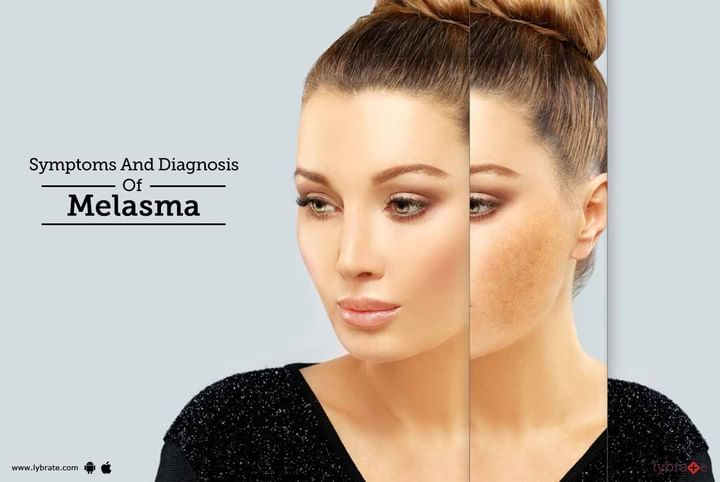Symptoms And Diagnosis Of Melasma
Melasma is a common skin problem where the skin becomes patchy brown, tan, or there is blue grey facial skin discoloration. It is also known as chloasma or mask of pregnancy. It occurs in women during the reproductive years and occurs rarely in men. It is primarily related to external sun exposure, external hormones like birth control pills and internal hormonal changes seen during pregnancy. Women with Melasma have a history of daily or intermittent sun exposure.
- Symptoms of Melasma: Melasma causes patches of discoloration, which are darker than typical skin colour. It occurs symmetrically with matching marks on both sides of face. It normally appears on the upper cheeks, upper lip, forehead and chin. It can also occur on the other areas of one's body which are often exposed to sun. Skin discoloration is not physically harmful, but it can affect the self-confidence of a person. Darker skinned individuals are more at risk as compared to fair skinned individuals. Melasma is associated with oestrogen and progesterone sensitivity, thus it can be triggered by birth control pills, pregnancy and hormone therapy. In few cases, stress and thyroid disease can also cause Melasma. Women taking hormone replacement therapy during menopause are also at high risk of getting Melasma
- Diagnosis of Melasma: A visual exam of the affected area is sufficient to diagnose Melasma. The doctor will perform the wood's lamp examination that uses ultraviolet (UV) light to look at the skin closely. However, the doctor may perform a biopsy to check for any serious skin conditions.
- Treatment of Melasma: When Melasma is caused by pregnancy or birth control pills, it disappears on its own. One can use creams containing hydroquinone or prescribed topical steroids, which can lighten the tone of the affected areas. Other options include chemical peels, dermabrasion and microdermabrasion which will remove the upper layers of skin and help lighten dark patches. In cases of severe Melasma, doctor may suggest laser treatments to remove the dark pigment.
It is quite possible that Melasma will clear up with treatment, there are things one must do to not to aggravate the condition and minimize appearance of the discoloration. These include usage of makeup to cover areas of discoloration, wearing sunscreen daily or wearing a hat with wide brim to provide shade to the face. The patients with Melasma are known to be at a lesser risk for Melanoma. Even if Melasma disappears, it can strike back especially if preventive measures regarding exposure to sun are not followed. Resolution with strict sun avoidance and topical bleaching creams can take sufficient time and patients should expect slow, but gradual lightening.



+1.svg)
